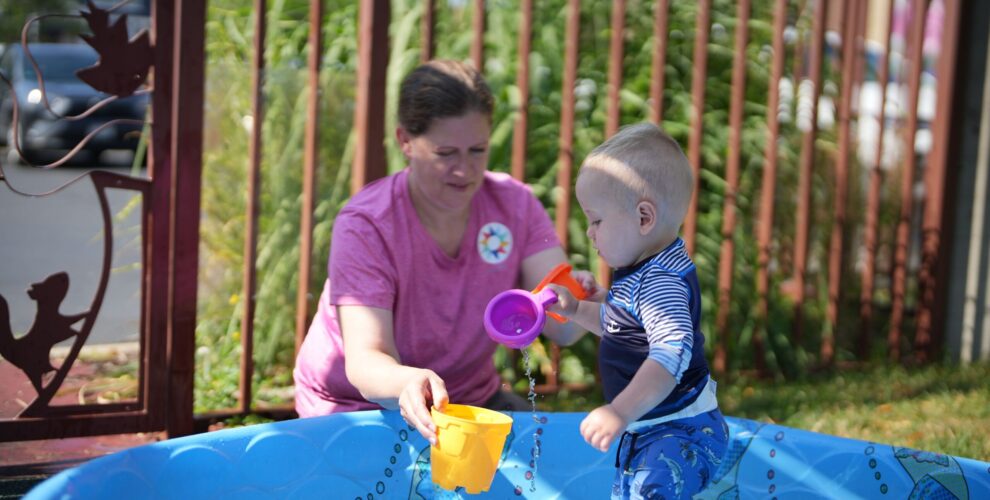Rashes can be a frequent occurrence for children. One common type of skin rash, called eczema, can be an ongoing cause of discomfort. In fact, 1 out of every 10 children will develop this type of skin condition.
What is eczema?
Eczema causes skin to become dry, red, and irritated, often accompanied by tiny bumps. The rash is itchy, and can affect any skin surface. The rash can range from mild to severe.
Eczema often begins during the first year of life, and usually starts on the cheeks, forehead, or scalp. The rash can then appear on other places such as the arms, legs, belly, or back. Itchy, rough, scaly patches may develop on elbows, knees, and other places, especially if left untreated. Scratching will make the rash worse and can lead to scarring or infection.
Researchers believe that eczema is passed down to children from their parents through genes. Eczema sometimes will accompany allergies, but is not an allergic reaction in itself. Eczema is not a contagious type of rash.
Treatment:
Because scientists believe that eczema is usually inherited, there is no true way to prevent eczema from occurring. However, flare-ups can be prevented by eliminating certain “triggers.” In order to keep your child as comfortable as possible, know what to do and what to avoid.
What to do:
• Consult a pediatrician to determine if a prescription cream is needed; use the cream consistently as prescribed, and use over the counter medications per the doctor’s suggestion. The most commonly used creams are topical steroids such as hydrocortisone. This is not the same type of steroid that athletes take; it helps with inflammation and itching.
• Keep skin moisturized during times of dry winter air
• Keep your child well hydrated, as this helps add moisture to the skin
• Try an oatmeal bath during bad flare-ups
• Keep track of what triggers your child’s flare-ups, and avoid those triggers as much as possible
• Apply a cool compress (in addition to doctor recommended anti-itch creams) to bad flare-ups to help with inflammation and itching
• Eliminate any known allergens from your household
• Keep your child’s fingernails cut short to avoid damage or infection from scratching
• Call your child’s pediatrician if you note any sign of skin infection from scratching (redness, warmth, pus-filled or oozing bumps around the area, or a fever)
What to avoid:
• Allowing skin to become too dry
• Coarsely woven materials and harsh, scratchy fabrics
• Harsh soaps and detergents
• Skin care products, perfumes, and colognes that contain alcohol in the ingredient list
• Tobacco smoke
• Excessive heat and excessive sweating
• Emotional stress
• Hot baths and excessive scrubbing following a bath; instead, use lukewarm water and pat your child’s skin dry
Following doctor’s recommendations and taking precautions to avoid and treat flare-ups can keep your child comfortable and keep eczema under control.
Reference:
http://kidshealth.org/parent/infections/skin/eczema_atopic_dermatitis.html



Leave a Reply